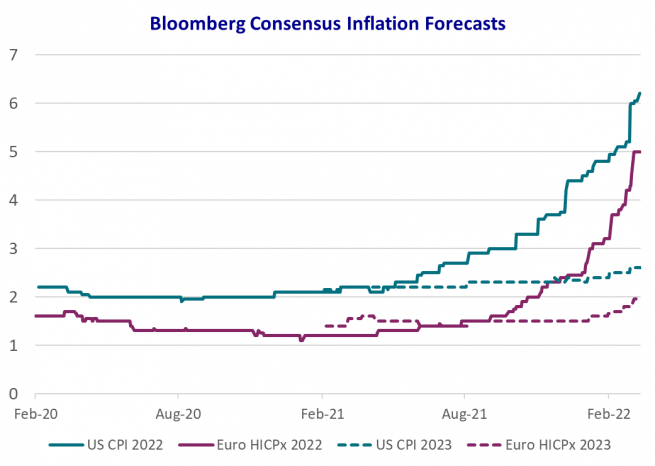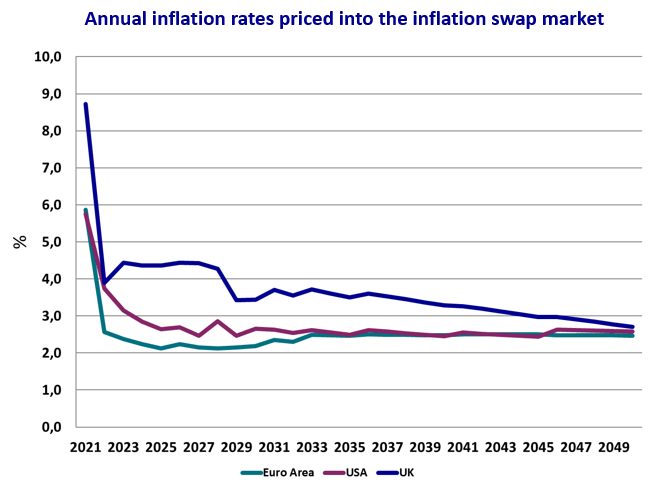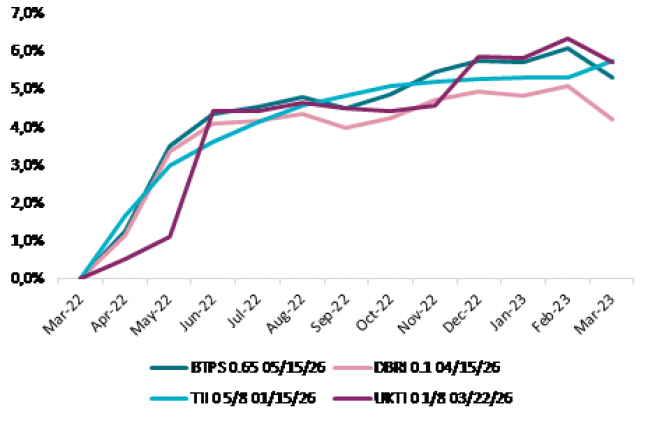While the war in Ukraine has pushed many commodities prices higher, inflation was already about more than only food and oil, with core Inflation numbers at their highest point in decades in many advanced economies. We prefer short-term inflation-linked bonds and do not believe that tighter monetary policy is a major risk to this strategy.
Inflation forecasts keep being revised higher and the timing for peak inflation keeps being pushed into the future.
While a year ago US inflation was expected to peak at 3.5% during summer 2021, today it is now expected to reach close to 9% before summer 2022. Inflation forecasts have been consistently pushed higher for this year, but the Bloomberg consensus of economists does continue to see inflation as transitory, as 2023 inflation forecasts are close to central banks’ targets.

Current inflation is hot because of COVID-19-related issues, and medium-term risks point to sticky inflation.
A large share of currently-elevated inflation is linked to COVID-19. Current lockdowns in China are potentially making it longer lasting than expected, but we see three key medium-term risks to the upside for inflation – and the war in Ukraine has only exacerbated those risks. First, structurally more elevated fiscal spending, not even accounting for bigger military budgets; second, trade wars and re-onshoring of production; and third, the green revolution or ‘greenflation’.
Despite the risk that inflation proves to be longer lasting and stickier than economists’ forecasts, the market is pricing in a sharp deceleration from 2023.

While we are convinced that inflation will decelerate in the second half of 2022, we see a risk that the slowdown may not be as abrupt as the market is expecting. Inflation swaps are currently expecting US and Eurozone inflation to be back to the central banks’ targets from late 2023. We see this as an optimistic pricing unless the economy enters a recession.
The currently extremely elevated monthly inflation numbers should be translated into solid income for inflation linked bonds. For this reason, we prefer short-term linkers aiming to capture generous carry while limiting duration exposure.
Five-year US dollar hedged income estimates

We do not believe that monetary policy normalisation is a major headwind at this stage as income should be large enough to offset the potential negative price impact. We keep a close eye on oil prices that in the event of a significant fall may push inflation and income lower.

